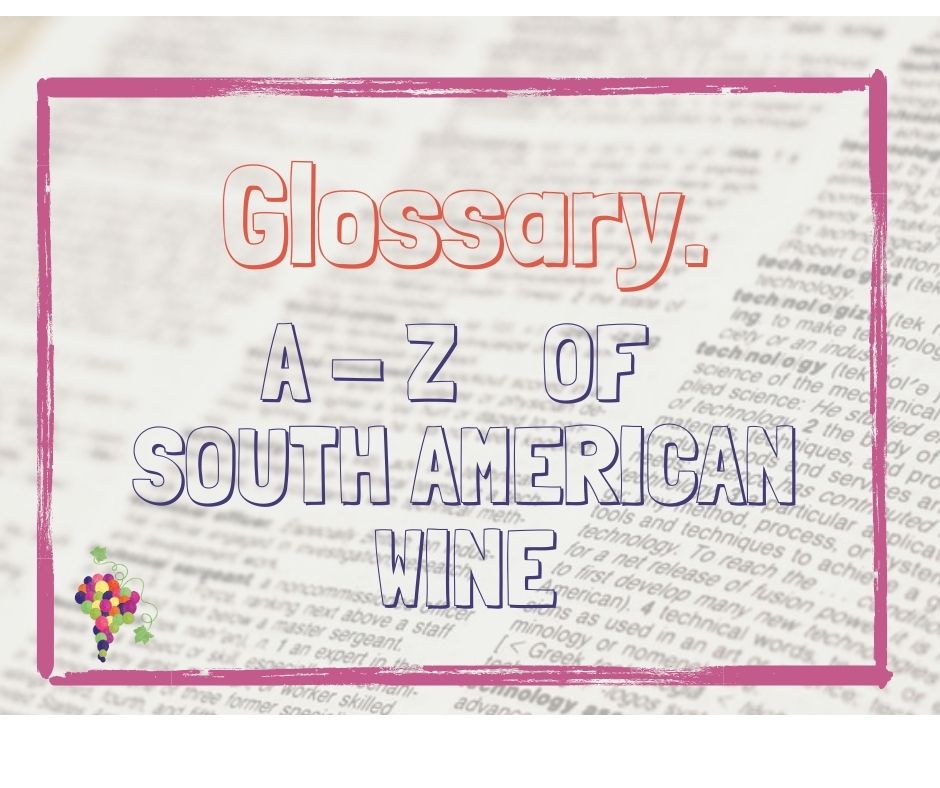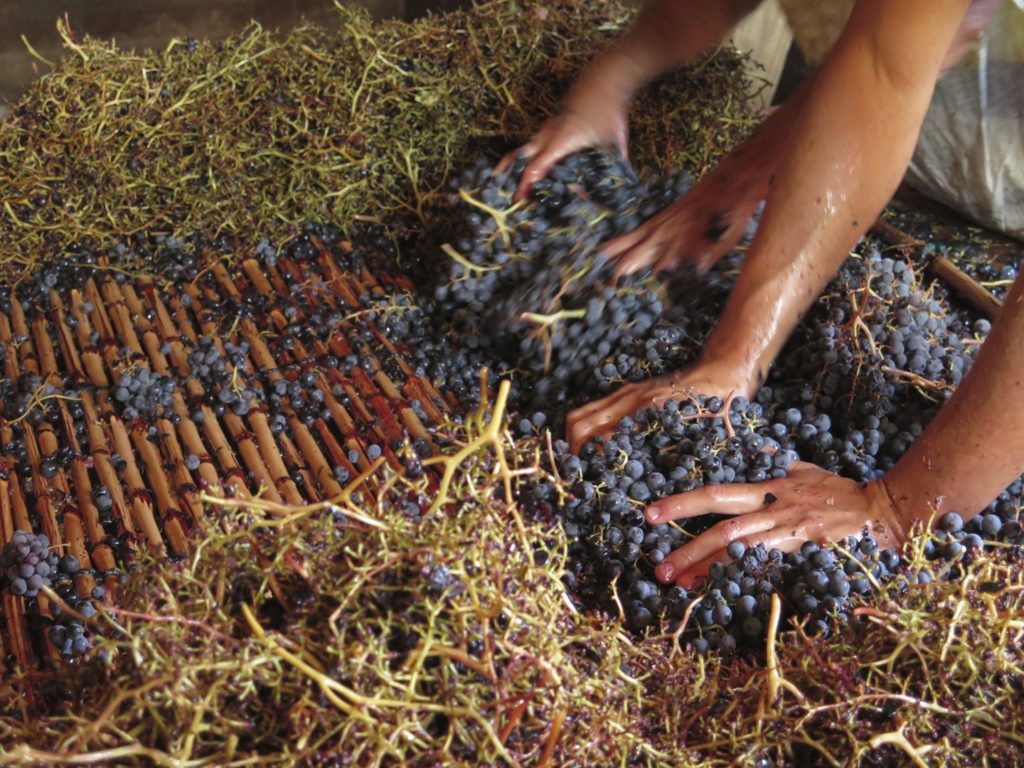Get to grips with South American wine terms in our Glossary and full A to Z guide. The ideal online appendix for our book, the South America Wine Guide, you can use this as your ultimate guide to wine terms in Chile, Argentina, Uruguay, Brazil, Bolivia and Peru.
We’ve also included some important cultural terms, food words and the wine associations from each country. Spanish and Portuguese terms are in italics.
A to Z of South America Wine: A glossary on wine terms for the South America Wine Guide
Irrigation channels that were originally built by the native Huarpes in Mendoza to bring water from the mountain rivers and expand agriculture. Today a complex network of acequias in Mendoza is responsible for bringing the majority of the province’s water to the vineyards (where irrigation is essential).
A traditional and historic building material made from earth and straw, which is often formed into large bricks and dried in the sunshine. Adobe was used to make wineries and other buildings in Argentina and Chile until the mid-20th century and many historical adobe wineries still exist, although they are becoming less common, partly because they are prone to earthquake damage.
Spanish term for a spirit made by fermenting and distilling any fruit (including grapes), grain or sugarcane. A similar term in English is firewater (and rightly so, as many stiff aguardientes will put fire in your belly!) In South America many aguardientes are made, both at a local, artisanal level and on a massive industrial scale. While many of the aguardientes in wine countries are made from grapes, other ingredients are also used for local spirits — Brazil’s most famous aguardiente is cachaça, made from sugar cane, for example.
Aji
Spanish name for chili peppers. Usually refers to spicy green peppers in Chile and spicy red peppers in Argentina, while in Peru there are over 50 chilli pepper varieties in common use. You might notice aji aromas in Chilean Sauvignon Blanc too!
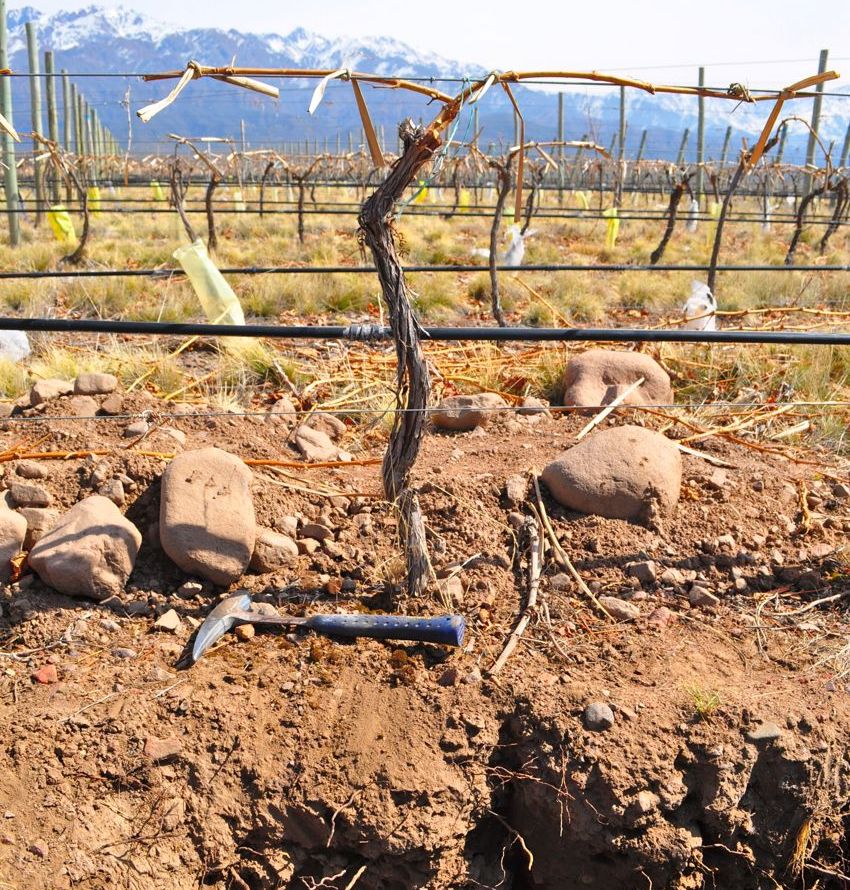
Soils that have been deposited by moving water, usually by the movement of rivers or floods over time. The soil deposits are often in layers and the width and depth of these layers vary depending on their proximity to the water path and the speed at which it travelled. Alluvial soils are typical throughout Argentina’s and Chile’s wine regions, which are situated at the foothills of the Andes.
In South America, people refer to themselves as American (i.e.. from the Americas). When talking about American grape varieties, I refer to grape varieties from the Vitis labrusca species of grapevines, which are native to North America. These grape varieties have historically been planted in Uruguay and Brazil, in particular, because they are better able to withstand the more humid conditions. Isabella (known in Uruguay as Frutilla, in Brazil as Isabel and in Peru as Borgoña) is the one most commonly found. American rootstocks are also used widely because of their resistance to phylloxera.
Barbecue in Argentina, Uruguay and Chile. More than simply a way of grilling meat, an asado is a cultural experience and social event that usually takes place over several hours among friends and family. Beef is most commonly cooked, although other typical ingredients for an asado are pork, chicken, chorizo, morcilla (black pudding) and mollejas (sweetbreads), which are cooked on a wood-fired parrilla (grill).
Owner of a winery, a vigneron.
The Bordeaux varieties are the varieties commonly planted in Bordeaux: Cabernet Sauvignon, Merlot, Cabernet Franc, Malbec, Carmenère and Petit Verdot. A Bordeaux blend is a red wine made with two or more of the Bordeaux varieties.
See tinaja.
Sedimentary rock or soil that is rich in calcium carbonate, and can be found in a few South American wine regions, particularly in the upper parts of the Uco Valley and Luján de Cuyo in Mendoza, Argentina. The calcium carbonate deposits retain some water and so vines grow well in or around the caliche soils, where their roots can delve in search of water. Producers in Mendoza are particularly excited about these soils as they feel it gives a certain chalky texture to the wines.
A dense sea fog that forms in northern Chile and impacts the wine regions of Limarí, Elqui and further north. Technically the camanchacas are marine stratocumulus cloud banks, and this rolling and heavy sea fog can keep the coastline cloudy till early in the afternoon. It keeps temperatures cool in the mornings and reduces sun exposure, although it never turns into rain. In Peru, the same effect is known as garúa.
A typical Peruvian and Chilean dish of raw fish, which is marinaded in citrus juice. Read more on ceviche!
Typical sauce served with meat in Argentina and Uruguay, usually made of chopped parsley, minced garlic, olive oil, oregano and red wine vinegar. Common variations include red pepper, spices and coriander. Chile has a similar sauce called pebre. Get our Chimichurri recipe!
Argentina’s typical roadside snack: a sausage (chorizo) stuffed in a bread roll (pan). A much meatier and more substantial version of a hot dog, usually grilled over the fire and served with chimichurri.
Brazilian barbecue usually involving grilling meat on a spit or skewer over a fire. A churrascaria is a steakhouse in Brazil, which often serve a rodízio, referring to an all-you-can-eat style churrasco. In Chile, churrasco is finely-sliced beef, usually fried and served in a sandwich with classic toppings like avocado, tomato and mayonnaise.
Soils that have been transported principally by gravity (rather than water, as is the case for alluvial soils). Colluvial soils are typically found within the mountain chains of Argentina and Chile.
A research and innovation group in Uruguay that has been responsible for certain viticultural and winemaking innovations, including the nationwide conversion from hybrid grape varieties to Vitis vinifera varieties from the 1980s onwards. CREA website.
A term used to refer to people, cultures and animal and plant species that were born in the Americas and are of mixed Spanish and native descent. For wine, this is an important term for describing the extensive family tree of grape varieties that was born in the Americas as a result of crossings between the Spanish grape varieties (mainly Moscatel de Alejandría and Listán Prieto) that were brought from Spain and were first planted here in the 1500s. Read more on Criolla wines.
See País.
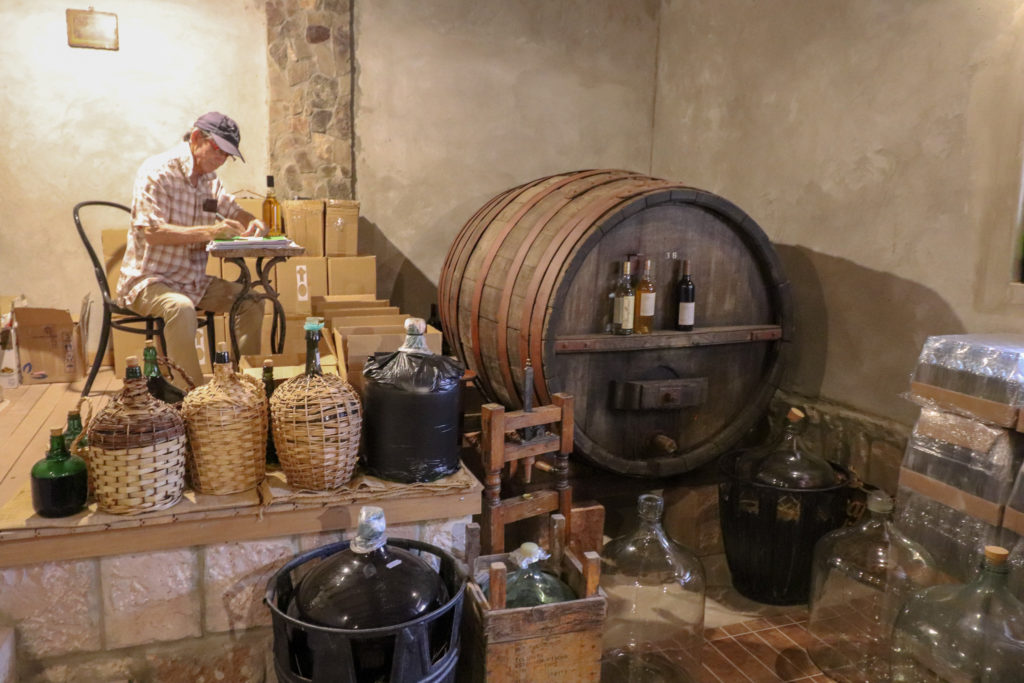
The Spanish term for a demijohn, which jug wines are generally sold in. They are still reasonably common in Argentina and Uruguay. Damajuana wine was the bread and butter of the Argentine wine industry for most of the 20th century, until the succession of crises dropped consumption from 92 litres per capita in the 1970s to less than 20 today.
You’ll still find plenty of damajuanas floating about in family kitchens and stacked on the lower shelf of every supermarket in Argentina but they are certainly losing ground to bottles and Tetra Paks. While bringing your own damajuana to refill at a winery used to be a mainstay of wine sales, there are sadly very few wineries left that still offer this rather more eco-friendly option. Bring back the damajuana days, I say!
See Thermal amplitude.
Dry farming refers to vines that can produce grapes without any need for additional irrigation. Traditional dry farming (or secano) regions in Chile include Maule, Bio Bio and Itata, which are collectively known as the Secano Interior (a specific inland region where dry farming has traditionally been practised). Rainier regions in Patagonian Argentina and Chile also do not require irrigation, and the wetter wine regions of Uruguay and Brazil are also often dry farmed. The majority of the wine regions in Argentina and Chile do, however, require irrigation.
A typical sweet caramel made from condensed milk and common throughout Latin America, especially in Uruguay and Argentina. In Chile it’s called manjar. Read our guide to Dulce de Leche
Research station within Brazil’s Ministry of Agriculture that oversees wine industry research and legislation. Emprapa website.
Spanish term for the ubiquitous pies served almost everywhere in South America. See our empanada recipe.
Agricultural research institute in Minas Gerais, Brazil. Responsible for viticultural research. Epamig website.
See VSP.
Spanish and Latin American term for a large farm or estate, which might include herds of cattle, crops, orchards and/or vineyards, or simply be private land.
Fundación para la Innovación Agraria (Foundation for Agricultural Innovation) in Chile. A government body that offers grants and financial support for viticultural innovation projects in Chile’s wine regions — especially the less developed or historical wine regions. FIA website.
Flor
Term used for the biofilm of yeast that is used to age a wine biologically. Traditionally used in the production of Sherry but also common in South America historically, and gaining more popularity today especially with Semillon and Criolla grape varieties.
A large wooden vat, anywhere between 2,000 and 10,000 litres in size, which were commonly used in Argentina and Chile, before mostly being replaced by 225-litre oak barrels/barriques in the late 20th century. Today foudres are coming back into fashion because they have a less oaky impact on the flavours and aromas of a wine.
See camanchaca.
A popular saint or folk hero in Argentina, known as the Robin Hood of gaucho culture. Gauchito Gil was a local hero who helped the needy and poor before being executed by the police in 1878. Today you’ll find shrines to Gauchito Gil around Argentina, Paraguay, Brazil and Chile with several red flags. His saint day is 8 January.
The nomadic and colourful horseman and cowhand of the Argentine grasslands, usually one of mixed Spanish and Indian descent, whose equestrian prowess and knowledge of the land was deployed with great success in the independence wars of the 19th century. Some celebrated the gaucho as a symbol of freedom fighting; others, however, saw the gaucho as a lawless rebel. Gauchos today typically work with cattle on estancias in Argentina, Uruguay and southern Brazil.
A Chilean countryman and skilled horseman, similar to the gaucho in Argentina.
Hybrid grape varieties are the result of a crossing between two or more Vitis species (usually with Vitis vinifera being one parent). They are often more resistant to disease and challenging climates but are seen as inferior in quality to the European Vitis vinifera varieties. Hybrids are still important in Brazil and Peru’s wine production, but have lost favour in Uruguay and are now being replaced by Vitis vinifera varieties.
In South America, and some other wine countries in the New World, the top wine of a winery is commonly described as the ‘icon wine’ of the portfolio. It can be an overstatement in many cases (often not having anything iconic about it beyond the company’s marketing and a high price tag), but sometimes these wines are iconic within the local or international wine scene. They are always the most expensive wine in the winery’s range, usually red, and usually the most concentrated and structured.
Uruguay’s National Institute of Viticulture, which was established in 1987 and monitors and regulates the wine industry. Based in Las Piedras in Canelones, INAVI is also an important actor in the promotion of Uruguayan wines both nationally and internationally. INAVI website.
Chile’s Institute of Agricultural Research, linked to the Chilean Ministry of Agriculture. In the field of viticulture, INIA maintains a library of vine genetic material, carries out analysis to identify old vines and provides information about viticulture. INIA website.
National Agricultural Technology Institute of Argentina, which was founded in 1956 and is in charge of agricultural innovation, including viticulture. There are regional offices throughout Argentina but the most important for the wine industry is in Mendoza. INTA website.
Argentina’s National Institute of Viticulture which records viticulture and winemaking statistics and regulates the wine industry. INV website.
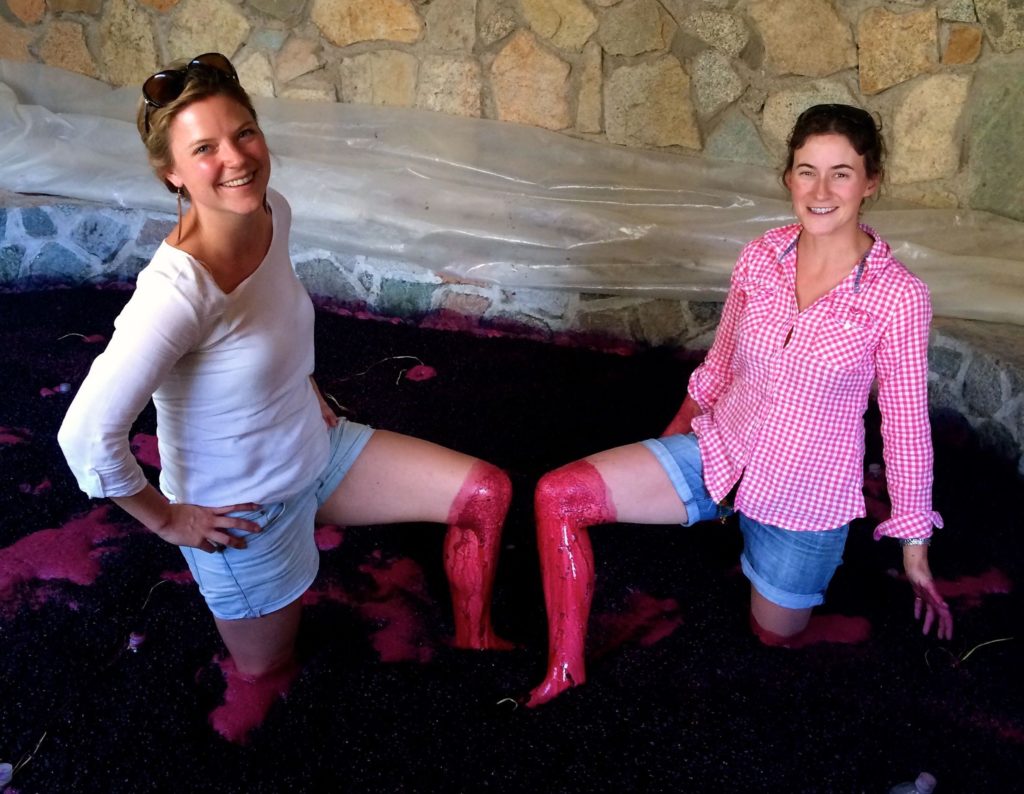
A lagar (or plural lagares) is a traditional stone or adobe pool in which wine producers would tread grapes by foot in order to break the skins and start the fermentation process.
Some wineries in Chile, Argentina, Peru and Bolivia continue to make wines in an artisanal manner using stone lagares, and, while many have replaced them with modern stainless steel tanks, others are just rediscovering this historic technique, as it is thought to extract colour and tannin from the grapes in a more gentle manner, improving the wine quality. Some wine producers, such as Viñedos de Alcohuaz in Chile, have even built brand new stone lagares.
Lo-fi winemaking is a hip new term, which Jancis Robinson taught me, to describe low-intervention winemaking, which tends to use native yeasts, neutral vessels and limited oak influence, for example. Natural wines are usually considered lo-fi.
See País.
A vine training system developed by French viticulturist Alain Cardonneau in the 1980s with two training cordons opened up in a V shape. It is a development of the Geneva Double Curtain trellis system and allows more sunshine to enter the canopy. It is particularly popular in Uruguay, accounting for almost a quarter of plantations.
The process of leaving grape juice or wine in contact with the grape skins to leach tannins, anthocyanins (responsible for colour) and flavour compounds. Maceration times range from minutes (as is the case in most white wines whereby grapes are pressed and the juice is separated immediately) to weeks or even months (for red and orange wines). The colour of a rosé wine is usually a key indicator of how long the maceration process has been: the deeper the colour, the longer the maceration period.
Altitude is an important factor in most of South America’s wine regions, affecting temperatures, solar exposure and soils.
A way of planting new vineyards by taking cuttings from selected old vines, widely practised worldwide before the modern invention of vine clone nurseries. Massal selection is still common in Argentina and Chile, especially with their prized pre-phylloxera old-vine material.
Native herbal tea produced and consumed widely in Argentina, Uruguay, Paraguay, Bolivia, parts of Chile and southern Brazil (where it is called chimarrão). More than just a drink, mate is a key part of the cultural identity of South America and it is shared communally between friends, families and colleagues throughout the day. Read more about mate.
A modern grape variety developed in France in the 1960s by crossing Cabernet Sauvignon and Garnacha (Grenache). Marselan is becoming increasingly popular in Brazil, Uruguay and Bolivia.
Uruguayan wine spritzer typically served around Christmas time. Made with sparkling wine mixed with white wine.
South American trade bloc established in 1991, which promotes trade and the fluid movement of goods, people and currencies among the member countries (currently Argentina, Brazil, Uruguay and Paraguay). Chile and several other South American countries are associated members, that also benefit from certain trade agreements. Mercosur website.
A dried, smoked chili pepper typical in Chile, and often ground to a powder or flakes. The traditional spice of Mapuche cuisine.
See País.
A sweet and strong spirit made from grape juice and alcohol (usually brandy). Common in Peru and often homemade.
A wine made from a single variety, e.g. 100% Malbec or 100% Chardonnay.
One of the first grapes to be planted in South America, still commonly planted in Bolivia, Chile, Peru and Argentina. Also known as Muscat of Alexandra. Read more about Criolla wines.
Growing movement worldwide towards making wines with minimal intervention winemaking and no or lower additions of sulphur during the winemaking and bottling process. There is a growing movement of natural winemakers in every country in South America who focus on making their wines with organic or biodynamic grapes and ambient yeasts, using neutral ageing vessels (such as clay, concrete, old oak or plastic bins), and no or minimal winemaking additions, including adding no or just very low quantities of sulphur. There is no official regulation about what constitutes a natural wine nor is it measured or qualified by any official body, so some wines are more ‘natural’ than others. Take the term with a pinch of salt!
The International Organisation of Vine and Wine. An intergovernmental organization that deals with technical and scientific aspects of viticulture and winemaking, and gathers international statistics on grape and wine production. OIV website.
A wine made using white wine grapes that have had extended skin contact during the winemaking process. The additional skin contact gives deeper colour (which can range from pale golden to a deep amber or orange hue), more texture and some tannin compared to white wines without skin contact. There are a growing number of orange wines being made in southern Chile, in particular, and in Mendoza in Argentina. Orange wines are usually made from grapes from old Criolla vines or old-vine Semillon, Malvasia and Moscatel.
Latin American trade bloc established in 2012 to promote trade and freedom in the movement of goods, services, capital, and people between the member countries (currently Chile, Peru, Colombia and Mexico). Pacific Alliance website.
The Pampas are vast grassy lowlands that cover large parts of central and eastern Argentina, all of Uruguay and southern Brazil. In total, the Pampas cover 1.2 million square kilometres of land and are dominated by cattle ranches and crop industries. (La Pampa is within the Pampas, and is a province in Argentina.)
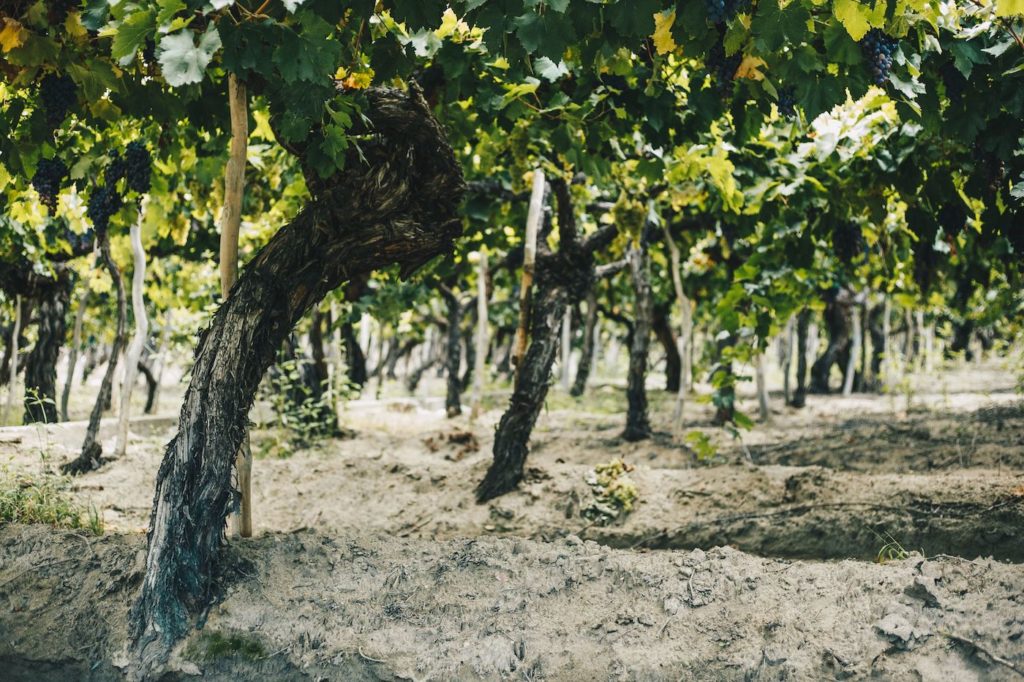
A viticultural training method whereby vines are trained to grow high on a pergola. This is a traditional method of viticulture in South America and parral-trained vines are particularly common in Argentina’s oldest vineyards planted with Criolla grape varieties, and in Pisco vineyards in northern Chile and Peru.
Parral training has largely been replaced by VSP training in modern vineyards, although some winemakers are returning to this form of training because it provides more shade from sunshine (which generally comes in abundance in many South American wine regions!) Most parral-trained vines are flood irrigated.
This is the Chilean name for this ubiquitous black grape variety, also known as Criolla Chica (Argentina), Missionera (Bolivia), Negra Criolla (Peru), Mission (USA) and Listán Prieto (Spain). It was the first vine to arrive in the Americas. Read more about País.
The Spanish term for a vine planted on its own roots (ungrafted, or without a rootstock). Most of the older vines (over 40 years old) on the continent are planted en pie franco. Thanks to the low risk of phylloxera in Argentina and lack of phylloxera in Chile, many new vines are also planted on their own roots (unless nematodes, salinity or drought are a significant problem in the region).
A pipa is a pipe-shaped raulí wooden cask traditionally used for winemaking in southern Chile, typically for pipeño.
Typical local wine made in Chile usually from País grapes in old pipas. Read more on Criolla wines and Pipeño.
Brandy made from Pisco grape varieties in designated areas of Peru and Chile. Read more about Pisco varieties.
Chile’s most popular cocktail made of Pisco with beaten egg whites, sugar and lime or lemon juice.
Portuguese term for bed and breakfast style overnight accommodation.
A native beech tree in Chile and Argentina that was historically often used to make wine casks, especially in southern Chile, where they are called pipas because of their pipe shape. Some winemakers are experimenting with raulí casks again, while many of the largest retired raulí have been upcycled into wood-fired hot tubs!
Chile’s Agricultural and Livestock Service, which keeps records of the country’s vineyards and producers and is also the body that controls the entry into Chile of fruit, vegetables and genetic material, like vines. SAG website.
Criolla grape variety from Chile that used to be widespread but plantings are now quite rare. DNA studies have shown there are at least two San Francisco varieties, one found in Huasco (a cross between Rosa del Perú and Semis de Goes), and one in Itata (a cross between San Francisco and Torrontés Mendocino).
See Dry farming.
Bolivian brandy made by distilling Moscatel de Alejandría wine (the Bolivian equivalent of Pisco). Often served neat or in a Chuflay cocktail with ginger ale, which is a delicious but a questionable antidote to altitude sickness!
Tannins are a group of bitter and astringent compounds that can be found in many food products (e.g. walnuts, tea, unripe apples) and wine. Tannins in wine naturally come from grape skins, pips (seeds) and stems, and can be added by the use of oak barrels used during ageing or in powder form. Tannins provide texture and mouthfeel to wine and create a sense of weight and structure.
Tannins are present in all red wines and some varieties are naturally more tannic than others, Tannat, for example, has pronounced tannins, while Pinot Noir has very soft or low levels of tannins. White whites do not have much tannin, unless the juice has been left for a while in contact with the grape skins (see orange wine) or they have been aged in oak. Rosé wines have low levels of tannins too.
Tongue-in-cheek cocktail served in Chile, which directly translates as earthquake in English (because apparently after drinking a couple of these the earth will tremble!). Made from pipeño or jug wine with bitters and ice cream (usually pineapple flavour), it really is only for the brave.
A French term or concept meaning ‘a sense of place’, and referring to a wine’s particular qualities due to the unique conditions the grapes were grown in and the wine was made in. Terroir refers to the interaction of climate, soil composition, topography, winemaking and culture, among other elements.
Thermal amplitude/range or diurnal range is the difference between the temperature during the day and the temperature during the night. A wide thermal amplitude, as typically found at high altitudes, is usually beneficial for good quality wine grapes.
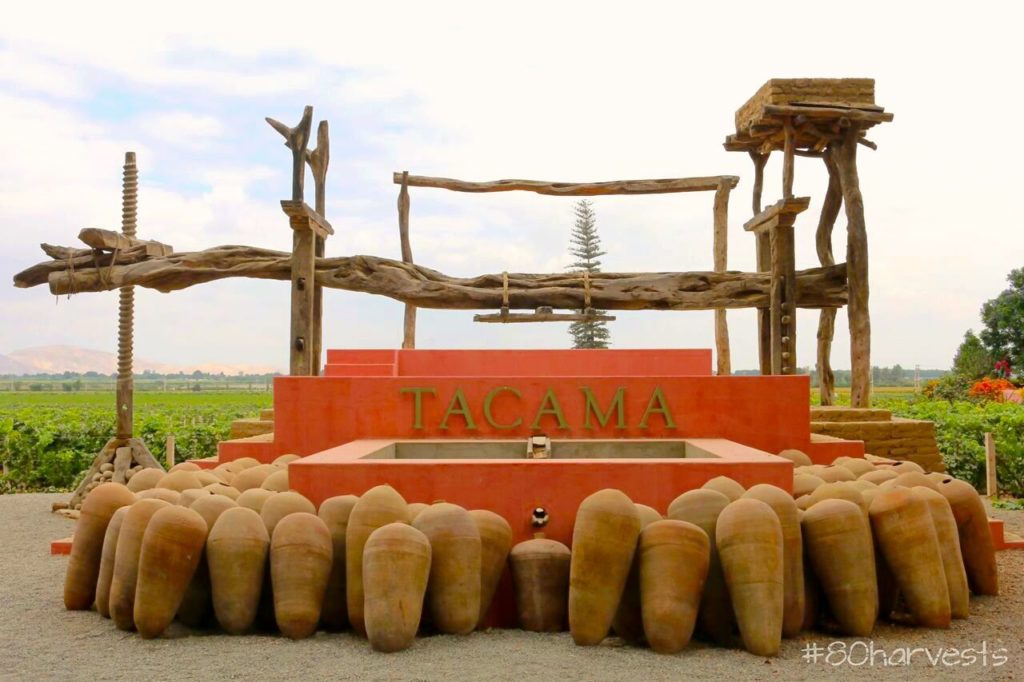
Traditional large clay jars, similar to amphorae, used historically in Chile and Peru for storing and transporting wine during the 16th century, and used for winemaking ever since. Clay tinajas are coming back into fashion in winemaking today, most especially on the natural wine scene and among artisanal producers in Chile and Peru. Tinajas were not traditionally used in Argentina, although some winemakers are experimenting with both traditional and modern versions.
Spanish term for teinturier grapes, used to describe a very small number of grape varieties that have dark-coloured flesh. Tintorera grapes give a deep colour to wine because they accumulate anthocyanin pigments in the pulp, as well as the skins and so they are often used to boost the colour of wines made predominantly from other varieties. Alicante Bouschet is one of the most common tintorera varieties planted in South America and often exported as a colouring agent for wine production internationally.
Toneles (plural) or a tonel (singular) are the large oak vats that were traditionally used in Argentina for vinification. During the 19th century the oak staves were sent by boat from France and assembled in Argentina’s wineries. The size of toneles could range from 10,000 litres to over 50,000 litres. Escorihuela Gascón in Mendoza still has one of the largest in the world, at 64,000 litres. Although largely extinct in modern winemaking, some winemakers are starting to use them again and a couple of wineries (notably López and Weinert) never stopped using them.
Native white variety believed to have originated in Argentina and to be a cross between Listán Prieto and Moscatel de Alejandría. There are three Torrontés varieties commonly planted in Argentina today. Frequently called Torontel in Chile. Read our guide to Torrontés.
Also still referred to as the champenoise method in South America because this is the method used to make Champagne. This technique is common to the best quality sparkling wines of Brazil, Chile and Argentina. The second fermentation (to create the bubbles) takes place in the bottle, rather than in a fermentation tank, as occurs with the charmat method. Read our guide to sparkling wine.
Viticulture trade association in Brazil, which represents and organises Brazilian viticulture for wine and juice, as well as gathering vineyard statistics. Uvibra website.
Someone who cultivates grapes and makes wine from them for a living.
Grapevine species responsible for most of the world’s quality wines. Also known as ‘European’, ‘international’ or ‘noble’ grape varieties. All of South America’s wine regions have Vitis vinifera grapevines planted, and some have hybrid varieties too.
Spanish word for wine (vinho in Portuguese).
Spanish term for homemade wine that has literally been trodden by foot.
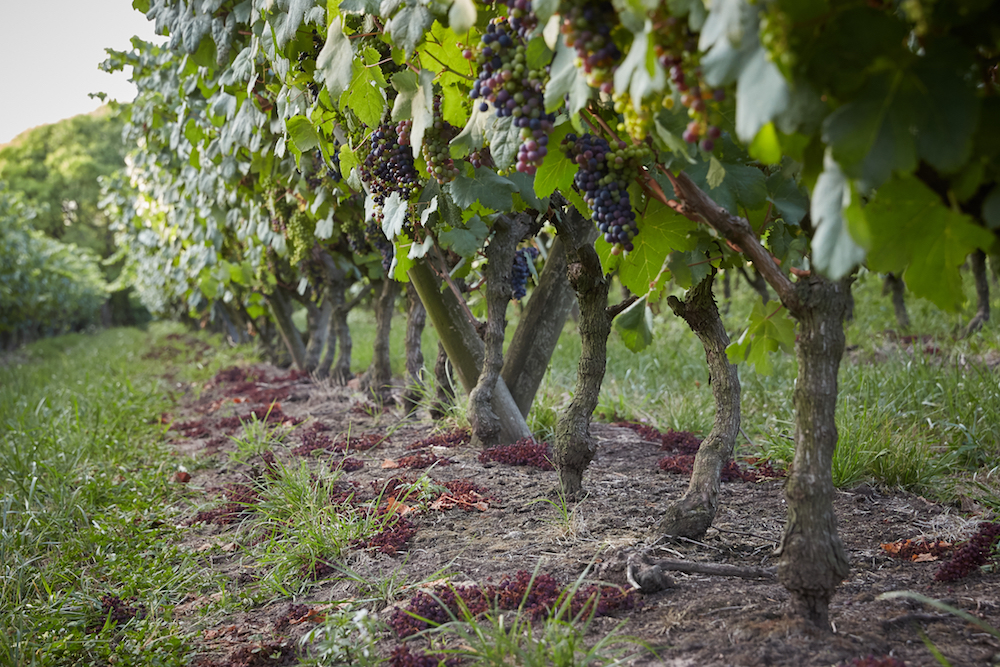
The most common modern viticultural training method introduced to South America by French consultant winemakers in the 20th century. Vines are trained along a series of horizontal wires to create a vertical, narrow canopy above with the fruiting zone below. Espaldera Alta allows the canopy to grow up to a metre in height, while Espaldera Baja will stop vegetation growth at around 60 cm.
VSP naturally controls yields and ensures the canopy and clusters of grapes are homogeneously positioned, making it easier to do jobs like pruning and harvesting (whether by hand or machine). It also means the amount of solar exposure and ventilation can be controlled, reducing the risk of rot. However, it can overexpose grape bunches to the intense sunlight prevalent in many of South America’s wine regions.
Traditional destemmer in Chile, which separates the berries from the stems using a cane mat. Using a zaranda was common historically and is now seeing a renaissance in Chile’s south with artisanal and natural wine producers, especially for País wines.
A fierce foehn wind that occurs in Argentina’s wine regions, especially Mendoza, San Juan, La Rioja and Catamarca during winter and spring. A change of pressure at high altitude causes a fast and furious wind to run down the eastern slopes of the Andes, usually bringing lots of dust with it. The wind is dry and hot and can run up to 240km/hour and increase temperatures by 15°C.
In a particularly strong Zonda, the view can be quite apocalyptic, with the sky turning a deep amber colour from the dust, while it causes havoc on the ground. People can experience nauseating headaches and the Zonda can cause significant damage to trees, electricity wires and vineyards and even start wildfires. A Zonda wind is usually followed by a cold front the next day, making temperature changes even more wild. Zonda is also the name of a wine region in San Juan, which is notorious for its strong Zonda winds.
Want to see all this wine lingo in action? Buy your copy of the South America Wine Guide now!
